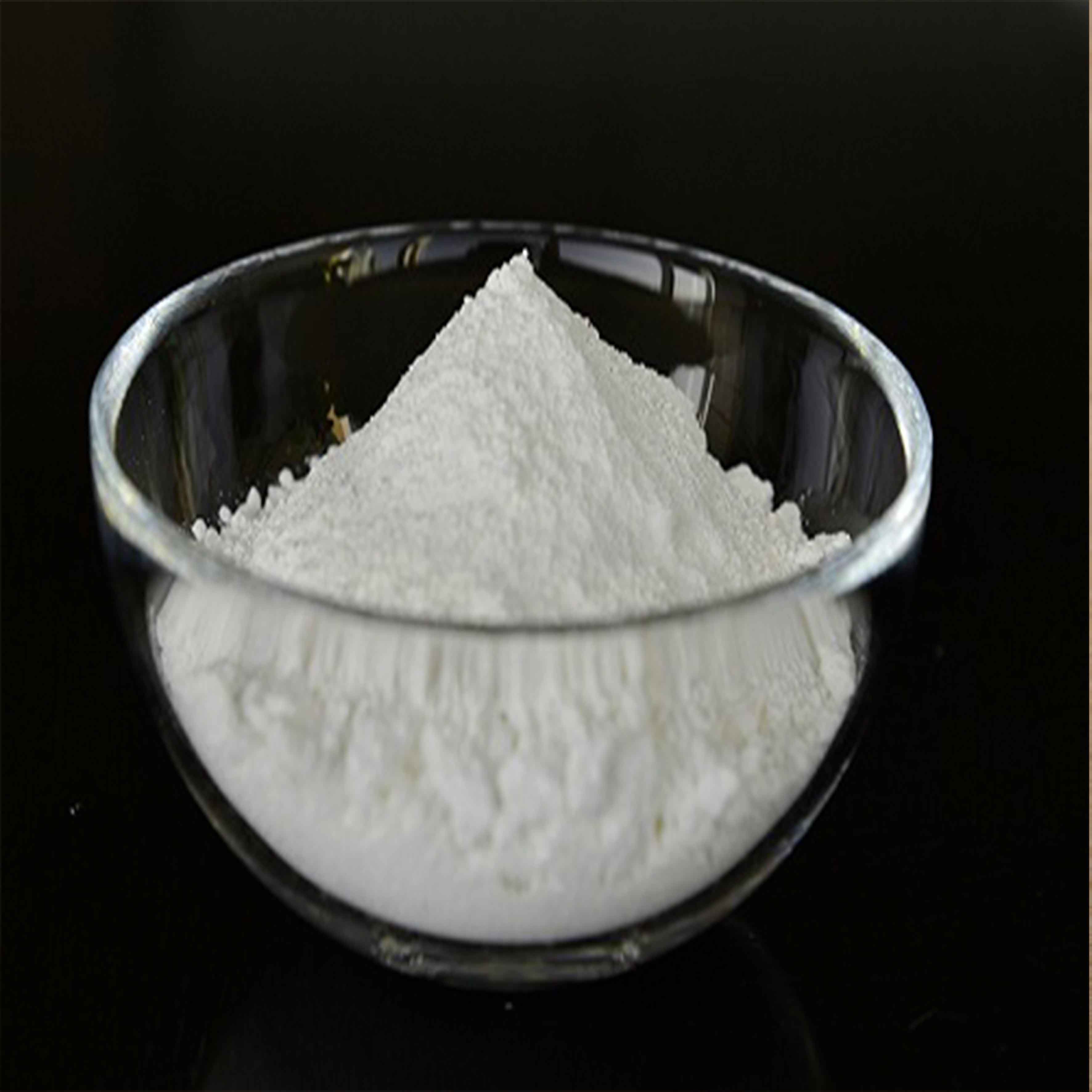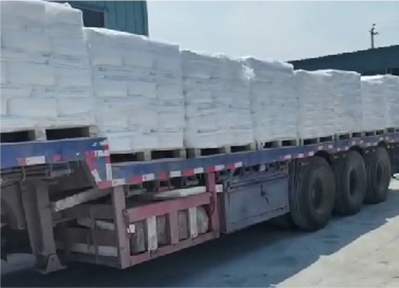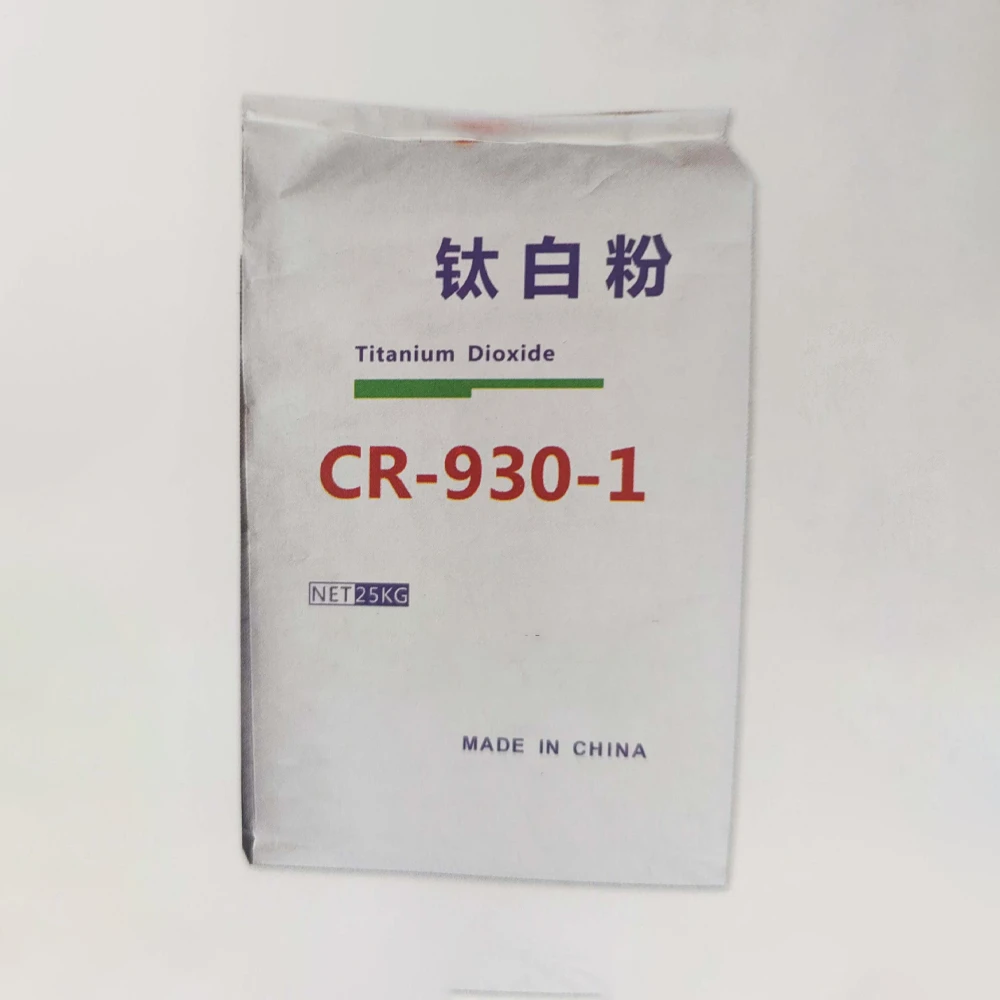
Sep . 11, 2025 07:20 Back to list
Premium Titania TiO2: High Purity for Superior Performance
Introduction and Industry Trends in Titanium Dioxide
Titanium Dioxide, commonly known as titania tio2, is a naturally occurring oxide of titanium, widely recognized for its exceptional whiteness, opacity, and UV resistance. This versatile compound is indispensable across a multitude of industrial applications, ranging from paints and plastics to cosmetics and food colorants. In the B2B landscape, particularly within sectors like ceramics, a high-quality titania formulation is critical for achieving desired aesthetic and functional properties.
The global market for titanium dioxide is experiencing robust growth, driven by increasing demand in emerging economies and the expanding applications in sustainable and high-performance materials. Key industry trends include a shift towards more eco-friendly production processes, enhanced focus on particle size distribution for specific applications, and the development of specialized grades, such as those optimized for high-temperature resistance and superior dispersion in ceramic glazes and bodies. The competitive landscape sees a strong presence from china titania tio2 manufacturers, who are continually innovating to meet stringent international quality standards and provide cost-effective solutions to global markets.

Innovations in synthetic rutile and anatase forms of titania tio2 continue to push the boundaries of performance, offering improved brightness, weatherability, and chemical inertness. The demand for industrial-grade titanium dioxide for ceramic making, in particular, is witnessing an upward trajectory due to its role in enhancing the opacity, whiteness, and thermal stability of ceramic products. As industries strive for greater efficiency and product longevity, the selection of a reliable titania tio2 supplier becomes paramount, influencing everything from production costs to final product quality and market competitiveness.
Manufacturing Process Flow of Titania TiO2
The production of high-grade titania tio2 involves complex chemical engineering processes, primarily categorized into the Sulfate process and the Chloride process. Both methods yield titanium dioxide but differ in raw materials, intermediate products, and environmental impact.
The Sulfate Process (for Anatase and Rutile grades):
- Raw Material Preparation: Ilmenite ore (FeTiO3) or titanium slag is crushed and ground.
- Acid Digestion: The prepared ore is reacted with concentrated sulfuric acid (H2SO4) to dissolve titanium and iron components, forming titanium sulfate (Ti(SO4)2) and ferrous sulfate (FeSO4). This is a crucial step often conducted in specialized digesters resistant to strong acids.
- Filtration and Clarification: The mixture is filtered to remove insoluble impurities. Ferrous sulfate heptahydrate (FeSO4·7H2O), known as copperas, is crystallized and removed to purify the titanium solution.
- Hydrolysis: The purified titanium sulfate solution is carefully heated and diluted, causing titanium hydroxide (Ti(OH)4) to precipitate. The conditions of hydrolysis dictate the crystalline form (anatase or rutile) and particle size.
- Washing and Bleaching: The titanium hydroxide slurry is repeatedly washed to remove residual acids and metal impurities. Bleaching agents may be used to enhance whiteness.
- Calcination: The washed filter cake is calcined at high temperatures (800-1000°C) in rotary kilns. This converts titanium hydroxide into stable titanium dioxide, controls crystal growth, and burns off any remaining volatile substances. Precise temperature and duration are critical for desired pigmentary properties like opacity and tinting strength.
- Milling and Surface Treatment: The calcined titania tio2 is finely milled (micronized) using fluid energy mills or pearl mills to achieve optimal particle size distribution. Many grades undergo inorganic surface treatments (e.g., with alumina, silica, zirconia) and organic treatments to improve dispersion, weatherability, and compatibility with various binders in target applications like ceramics.
The Chloride Process (for Rutile grades):
- Chlorination: High-grade titanium-containing ore (e.g., natural rutile or beneficiated ilmenite) is reacted with chlorine gas (Cl2) in a fluid-bed reactor at high temperatures (900-1000°C) in the presence of carbon. This forms titanium tetrachloride (TiCl4) and other metal chlorides.
- Purification: The gaseous TiCl4 is separated from other metal chlorides through fractional distillation, achieving extremely high purity.
- Oxidation: Purified TiCl4 is then reacted with oxygen (O2) at very high temperatures (typically over 1000°C). This rapid oxidation produces fine rutile titania tio2 particles and regenerates chlorine gas, making it a more environmentally friendly process due to chlorine recycling.
- Milling and Surface Treatment: Similar to the sulfate process, the resulting rutile TiO2 undergoes milling and precise surface treatments to optimize its performance characteristics for specific industrial uses, including ceramic manufacturing.

Testing Standards: Throughout both processes, rigorous quality control measures are applied, adhering to international standards such as ISO 591-1 (Pigments for paints – Titanium dioxide pigments – Part 1: Specifications and methods of test) and ASTM D476 (Standard Specification for Titanium Dioxide Pigments). These standards ensure consistency in parameters like TiO2 content, whiteness, oil absorption, and residue on sieve, which are critical for high-performance applications in industries like petrochemical, metallurgy, and water supply & drainage, where product integrity and service life are paramount.
Technical Specifications and Performance Parameters
The performance of titanium dioxide in ceramic manufacturing is dictated by a precise set of technical specifications. These parameters ensure that the pigment provides optimal opacity, whiteness, glaze stability, and adherence during firing processes. Our TITANIUM DIOXIDE FOR CERAMIC MAKING INDUSTRIAL USE is meticulously engineered to meet the demanding requirements of the ceramic industry.
| Parameter | Typical Value | Test Method / Standard |
|---|---|---|
| TiO2 Content (%) | ≥ 98.5 | ISO 591-1, ASTM D476 |
| Crystal Form | Rutile (Highly stable) | XRD |
| Whiteness (L) | ≥ 95.0 (CIE Lab) | ISO 2470 |
| Oil Absorption (g/100g) | 18-22 | ISO 787-5 |
| Residue on Sieve (45 μm) (%) | ≤ 0.05 | ISO 787-7 |
| pH Value (10% aqueous suspension) | 6.5-8.0 | ISO 787-9 |
| Specific Gravity (g/cm³) | 4.1-4.2 | ISO 787-10 |
| Volatile Content at 105°C (%) | ≤ 0.5 | ISO 787-2 |
| Average Particle Size (µm) | 0.25-0.35 | Laser Diffraction |
These specifications are crucial for B2B procurement, enabling manufacturers to precisely match the titania tio2 grade with their specific production requirements. The high TiO2 content and rutile crystal form ensure maximum opacity and durability, while optimized particle size distribution guarantees excellent dispersion in ceramic frit, glazes, and bodies, contributing to superior finish and consistency.
Application Scenarios & Technical Advantages
The versatility of titania tio2 makes it a critical component across diverse industrial applications, particularly where high performance in terms of whiteness, opacity, and durability is non-negotiable. Its unique properties are leveraged in specific scenarios to deliver significant technical and operational advantages.
Primary Application Scenarios:
- Ceramic Manufacturing: Essential for glazes, enamels, and ceramic bodies. It provides superior whiteness, opacity, and acts as a matting agent. In sanitaryware, tiles, and tableware, it ensures vibrant colors and robust surfaces resistant to wear and chemical attack.
- Paints and Coatings: The most significant application, offering unparalleled opacity, brightness, and protection against UV degradation for both interior and exterior coatings. It extends the service life of painted surfaces, reducing maintenance costs.
- Plastics and Rubber: Incorporated as a pigment to provide whiteness and opacity to various plastic products, films, and rubber compounds. It also acts as a UV stabilizer, preventing degradation and color fading.
- Paper and Pulp Industry: Used as a filler and coating pigment to improve paper whiteness, opacity, and printability, particularly for high-quality printing papers and lightweight coated papers.
- Cosmetics and Personal Care: Due to its UV-blocking properties, it's widely used in sunscreens, foundations, and other cosmetic formulations as a physical sun filter and pigment.
- Food and Pharmaceuticals: A safe and effective coloring agent (E171) in certain food products, and as an opacifier in pharmaceutical tablets and capsules.

Technical Advantages in Typical Application Scenarios:
- Energy Saving in Ceramic Firing: High-purity titania tio2 allows for thinner glaze applications while maintaining desired opacity, potentially reducing firing times or temperatures for certain ceramic products, leading to energy savings in the kiln operation.
- Corrosion Resistance Enhancement: In protective coatings, especially for petrochemical and metallurgy industries, titanium dioxide significantly boosts the durability and corrosion resistance of the coating layer, extending the lifespan of critical infrastructure components. This translates to lower maintenance costs and increased operational safety.
- Improved UV Stability: For outdoor applications (e.g., building materials, automotive coatings), the exceptional UV absorption and scattering properties of TiO2 prevent polymer degradation, cracking, and chalking, maintaining the aesthetic and structural integrity of the material over time.
- Superior Opacifying Power: Its high refractive index ensures outstanding hiding power, allowing for fewer coating layers or thinner material usage, which conserves raw materials and reduces production costs.
- Chemical Inertness: TiO2 is chemically stable and non-reactive, making it suitable for demanding environments such as those found in water supply & drainage systems where chemical exposure is common, ensuring product longevity and safety.
- Enhanced Mechanical Properties: In certain polymer composites, finely dispersed titania can contribute to improved tensile strength and hardness, adding structural integrity to the final product.
Vendor Comparison: Selecting a Titania TiO2 Supplier
Choosing the right titania tio2 manufacturer is a strategic decision that impacts product quality, cost-efficiency, and supply chain reliability. With numerous titania tio2 suppliers globally, particularly a significant number of china titania tio2 factories, a thorough vendor comparison is essential for B2B buyers.
Key Differentiators for Vendor Selection:
| Criterion | Importance | Considerations for Buyers |
|---|---|---|
| Product Quality & Consistency | High | Verify adherence to ISO, ASTM standards. Request Certificates of Analysis (CoA) for consistency across batches. Check TiO2 content, crystal form (rutile vs. anatase), particle size, and surface treatment. |
| Technical Support & R&D | Medium to High | Does the supplier offer application-specific expertise? Can they provide technical guidance for process optimization or custom formulations? Strong R&D capabilities indicate future innovation. |
| Certifications & Compliance | High | Look for ISO 9001 (Quality Management), ISO 14001 (Environmental Management), REACH compliance, and other relevant industry-specific certifications. |
| Supply Chain Reliability & Lead Time | High | Assess production capacity, logistics networks, and lead times. A robust supply chain minimizes disruption and ensures timely delivery for large-scale operations or for wholesale titania tio2 orders. |
| Pricing Structure & Payment Terms | Medium | Compare competitive pricing, volume discounts, and favorable payment terms. Evaluate total cost of ownership, not just unit price, considering quality and reliability. |
| Environmental & Social Responsibility | Growing | Inquire about sustainable practices, waste management, and commitment to ethical sourcing. This aligns with corporate social responsibility goals and regulatory trends. |
While numerous titania tio2 factories exist, a proven track record, consistent product quality, and a commitment to customer support are critical. Our company, with years of specialized experience as a reliable titania tio2 manufacturer, upholds rigorous quality control and technical expertise, offering confidence to industrial clients worldwide.
Customized Solutions and Application Case Studies
Recognizing that industrial applications often demand tailored specifications, we offer customized titania tio2 solutions to meet unique client requirements. Our technical team works closely with partners to develop grades optimized for specific rheological properties, dispersion characteristics, or interaction with complex matrices.
Customization Capabilities:
- Particle Size and Distribution: Precision control over particle size for optimal light scattering in glazes or specific surface area for catalytic applications.
- Surface Treatments: Inorganic (alumina, silica, zirconia) and organic coatings can be tailored to enhance dispersibility in various solvents, improve weatherability, or adjust compatibility with specific polymer systems.
- Crystalline Phase Ratio: Adjusting the anatase-rutile ratio for applications requiring specific photocatalytic activity or thermal stability.
- Impurity Profile: Minimizing trace elements to meet strict purity standards for sensitive applications, such as medical devices or high-end electronics.
Application Case Studies:
Case Study 1: High-Performance Ceramic Tiles for Architectural Projects
A leading European tile manufacturer sought to develop a new line of ultra-white, high-gloss ceramic tiles with exceptional durability for large-scale architectural projects. Their existing TiO2 pigment provided insufficient whiteness and occasionally exhibited firing defects. Our technical team collaborated with their R&D department to formulate a specialized rutile titania tio2 grade with an optimized narrow particle size distribution and a proprietary inorganic surface treatment. This customization resulted in a 15% increase in CIE L whiteness values, a 10% reduction in glaze consumption due to superior opacity, and eliminated common firing defects, leading to significant material savings and enhanced product appeal. The client reported improved production efficiency and successful market penetration with their new premium tile range.
Case Study 2: UV-Resistant PVC Window Profiles
An industrial client producing PVC window profiles for harsh outdoor environments faced challenges with premature yellowing and embrittlement caused by UV exposure. Standard TiO2 pigments offered limited protection. We developed a highly-weatherable rutile TiO2 grade with a dual-layer inorganic coating (dense silica and alumina) specifically designed to encapsulate the TiO2 particle, effectively creating a barrier against photocatalytic degradation. Post-implementation, accelerated weathering tests (ASTM G154) showed a 50% improvement in color stability and a 30% extension in the estimated service life of the PVC profiles, resulting in a stronger brand reputation and reduced warranty claims for our partner.

These case studies exemplify our commitment to providing not just a product, but a complete solution, leveraging deep technical expertise and collaborative development to solve complex industrial challenges.
Frequently Asked Questions (FAQ) about Titania TiO2
- Q1: What is the difference between rutile and anatase titania TiO2?
- A1: Rutile and anatase are the two primary crystalline forms of titanium dioxide. Rutile is denser, harder, and has a higher refractive index, offering superior opacity, weatherability, and UV resistance, making it ideal for most industrial applications like paints, plastics, and ceramics. Anatase is softer, has a lower refractive index, and is known for its photocatalytic activity, used in self-cleaning surfaces and air purification. For ceramic making, rutile titania tio2 is generally preferred due to its stability and superior pigmentary properties.
- Q2: How does particle size affect TiO2 performance in ceramic glazes?
- A2: Particle size is critical for optimizing light scattering and dispersion in ceramic glazes. An optimal particle size distribution (typically around 0.2-0.4 micrometers for rutile) maximizes opacity and whiteness. Particles that are too large can lead to a gritty texture or sedimentation, while excessively fine particles may cause agglomeration or affect the rheology of the glaze, impacting application consistency and final finish.
- Q3: Is your titania TiO2 compliant with international environmental standards?
- A3: Yes, our manufacturing processes adhere to stringent environmental regulations, including ISO 14001 certification for environmental management. Our products are also compliant with global chemical registration requirements such as REACH (Registration, Evaluation, Authorisation and Restriction of Chemicals) for the European market, ensuring responsible production and supply chain practices.
- Q4: Can you provide samples for R&D and testing?
- A4: Absolutely. We understand the importance of comprehensive testing for industrial applications. We readily provide samples of our TITANIUM DIOXIDE FOR CERAMIC MAKING INDUSTRIAL USE to qualified B2B customers for R&D, pilot runs, and quality assurance purposes. Please contact our sales team to discuss your specific requirements and arrange for sample delivery.
Logistics, Warranty, and Customer Support
As a leading titania tio2 manufacturer, we are committed to providing a seamless experience from order placement to post-delivery support. Our operational excellence ensures timely fulfillment and robust customer care.
Lead Time and Fulfillment:
We maintain efficient production schedules and strategic inventory levels to ensure prompt delivery. Standard lead times for our TITANIUM DIOXIDE FOR CERAMIC MAKING INDUSTRIAL USE are typically 10-15 business days for bulk orders, depending on order volume and destination. Expedited shipping options are available upon request. Our global logistics network ensures reliable door-to-door delivery, managing all customs and documentation requirements for international shipments.
Warranty Commitments:
Our titania tio2 products are backed by a comprehensive warranty, guaranteeing that they meet or exceed the specified technical parameters and quality standards outlined in our product data sheets and Certificates of Analysis (CoA) for a period of 12 months from the date of shipment. We are committed to resolving any product-related issues promptly and effectively, ensuring customer satisfaction and trust.
Dedicated Customer Support:
Our customer support team comprises experienced technical and logistics professionals ready to assist with any inquiries. From technical specifications and application guidance to order tracking and post-sales service, we provide responsive and knowledgeable support. Clients can reach us via phone, email, or through our dedicated online portal. We believe in building long-term partnerships through consistent communication and unparalleled service.
Authoritative References
- Chen, X., & Mao, S. S. (2007). Titanium dioxide nanomaterials: synthesis, properties, modifications, and applications. Chemical Reviews, 107(7), 2891-2959.
- Diebold, U. (2003). The surface science of titanium dioxide. Surface Science Reports, 48(5-8), 53-229.
- ISO 591-1:2018. Pigments for paints — Titanium dioxide pigments — Part 1: Specifications and methods of test. International Organization for Standardization.
- The Titanium Dioxide Manufacturers Association (TDMA). (2023). https://tdma.info/
-
Essential Guide to Calcium Powder Quotes – Pricing, Quality & Global Insights
NewsNov.24,2025
-
Reliable Anatase TiO2 Pigment Quotes for Sustainable Industry Use | CQ Titanium Dioxide
NewsNov.24,2025
-
Understanding Lithopone B311 Powder Quotes – Market Insights & Applications
NewsNov.23,2025
-
Reliable 30-50nm TiO2 Powders Quotes for Advanced Industrial Use | CQTitanium
NewsNov.23,2025
-
Comprehensive Guide on Lithopone Red Pigments Quotes | Industry Insights & Pricing
NewsNov.22,2025
-
Comprehensive Insights into the Lithopone Market: Global Trends & Applications
NewsNov.22,2025
